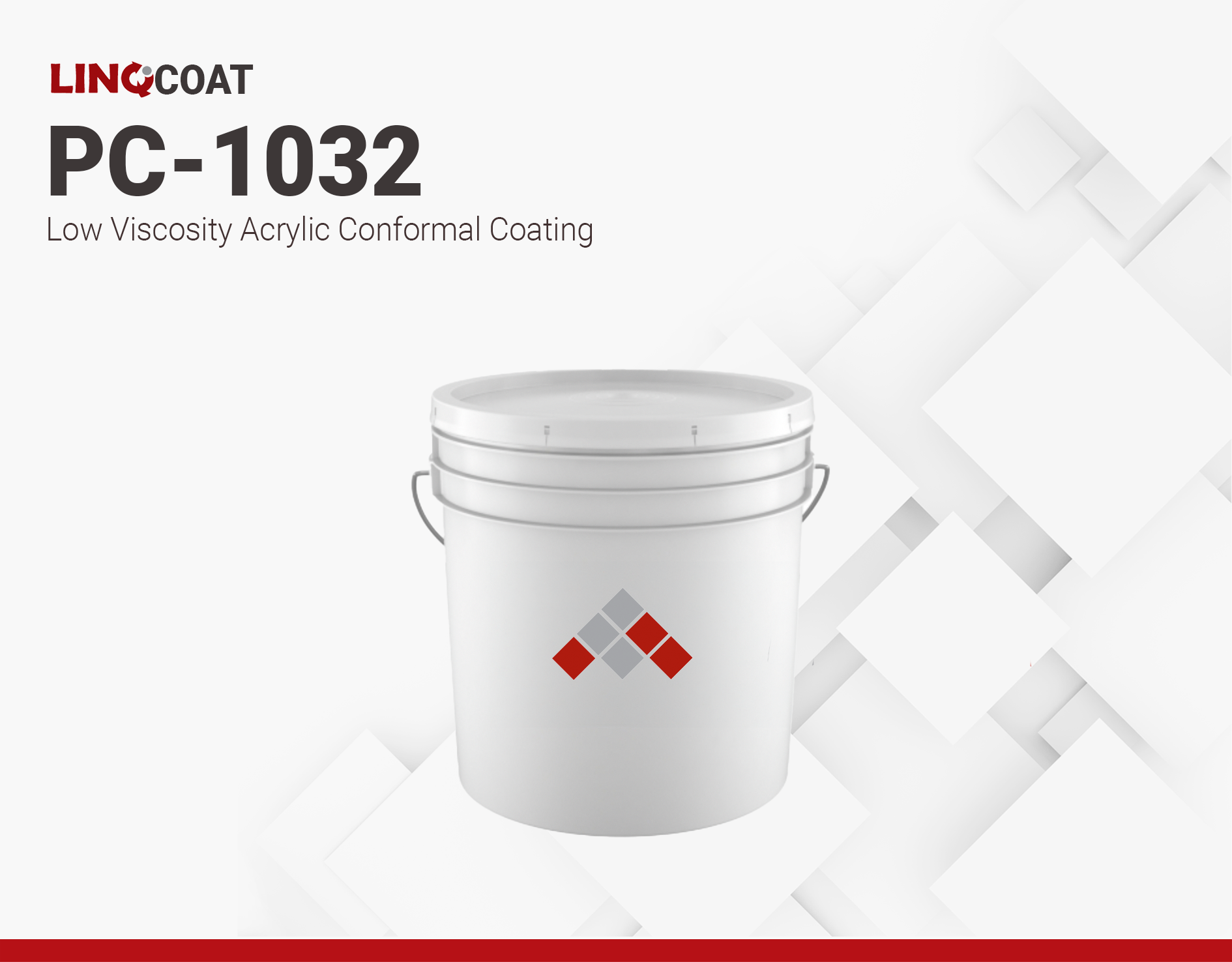LINQCOAT PC-1032 | Acrylic conformal coating
Harmonization Code : 3906909090 | Acrylic polymers in primary form Others>Others
Main features
- Acrylic Conformal Coating
- Transparent
- Dielectric Strength 30 kV/mm
Product Description
LINQCOAT PC-1032 is a single-component, low-viscosity, neutral polymer composite material that offers easy application through spraying, dipping, or brushing. It exhibits impressive resistance to both high and low temperatures.
Once cured, it creates a transparent protective film renowned for its exceptional insulation, moisture-proofing, leakage prevention, shock absorption, dust resistance, anti-corrosion properties, and resilience against aging and corona effects. Linqcoat PC-1032 also contains a UV tracer. Due to these attributes, it finds widespread application in surface coating protection for electronic components.
Key Features:
- Modified acrylic coating
- Contains UV tracer
- No silicone
- Transparent
- Protective film
- Quick tack dry time (3-10 minutes at RT)
Technical Specifications
| General Properties | |||||
| Appearance Appearance Appearance at room temperature. | Transparent | ||||
| Density (g) | 1 g/cm3 | ||||
| Solids | 35 % | ||||
| |||||
| Physical Properties | |||||
| Viscosity Viscosity Viscosity is a measurement of a fluid’s resistance to flow. Viscosity is commonly measured in centiPoise (cP). One cP is defined as the viscosity of water and all other viscosities are derived from this base. MPa is another common unit with a 1:1 conversion to cP. A product like honey would have a much higher viscosity -around 10,000 cPs- compared to water. As a result, honey would flow much slower out of a tipped glass than water would. The viscosity of a material can be decreased with an increase in temperature in order to better suit an application | 400-800 mPa.s | ||||
| Mechanical Properties | |||||
| Adhesion Strength Adhesion Strength Adhesion is the bond strength measurement of a coating to a substrate. When an adhesive is bonded to an item or surface, numerous physical, mechanical and chemical forces come into play, which may have an effect on each other. | 6 Oz/in | ||||
| Elongation Elongation Elongation is the process of lengthening something. It is a percentage that measures the initial, unstressed, length compared to the length of the material right before it breaks. It is commonly referred to as Ultimate Elongation or Tensile Elongation at break. | 30 % | ||||
| |||||
| |||||
| Electrical Properties | |||||
| Dielectric Strength Dielectric Strength Dielectric strength is measured in kV per mm and is calculated by the Breakdown voltage divided by the thickness of the tested material. Those two properties go hand in hand and while Breakdown voltage is always thickness dependent, dielectric strength is a general material property. As an example, the dielectric strength of Polyimide is 236 kV/mm. If we place 1mm of Polyimide between two electrodes, it will act as an insulator until the voltage between the electrodes reaches 236 kV. At this point it will start acting as a good conductor, causing sparks, potential punctures and current flow. | 30 kV/mm | ||||
| Volume Resistivity Volume Resistivity Volume resistivity, also called volume resistance, bulk resistance or bulk resistivity is a thickness dependent measurement of the resistivity of a material perpendicular to the plane of the surface. | 1.0x1014 Ohms⋅cm | ||||
| Thermal Properties | |||||
| Operating Temperature | 50-120 °C | ||||
| Other Properties | |||||
| RoHS Compliant RoHS Compliant RoHS is a product level compliance based on a European Union Directive which restricts the Use of certain Hazardous Substances in Electrical and Electronic Equipment (RoHS). Products compliant with this directive do not exceed the allowable amounts of the following restricted materials: lead, mercury, cadmium, hexavalent chromium, polybrominated biphenyls (PBB) and polybrominated diphenyl ethers (PBDE), with some limited exemptions | Yes | ||||



